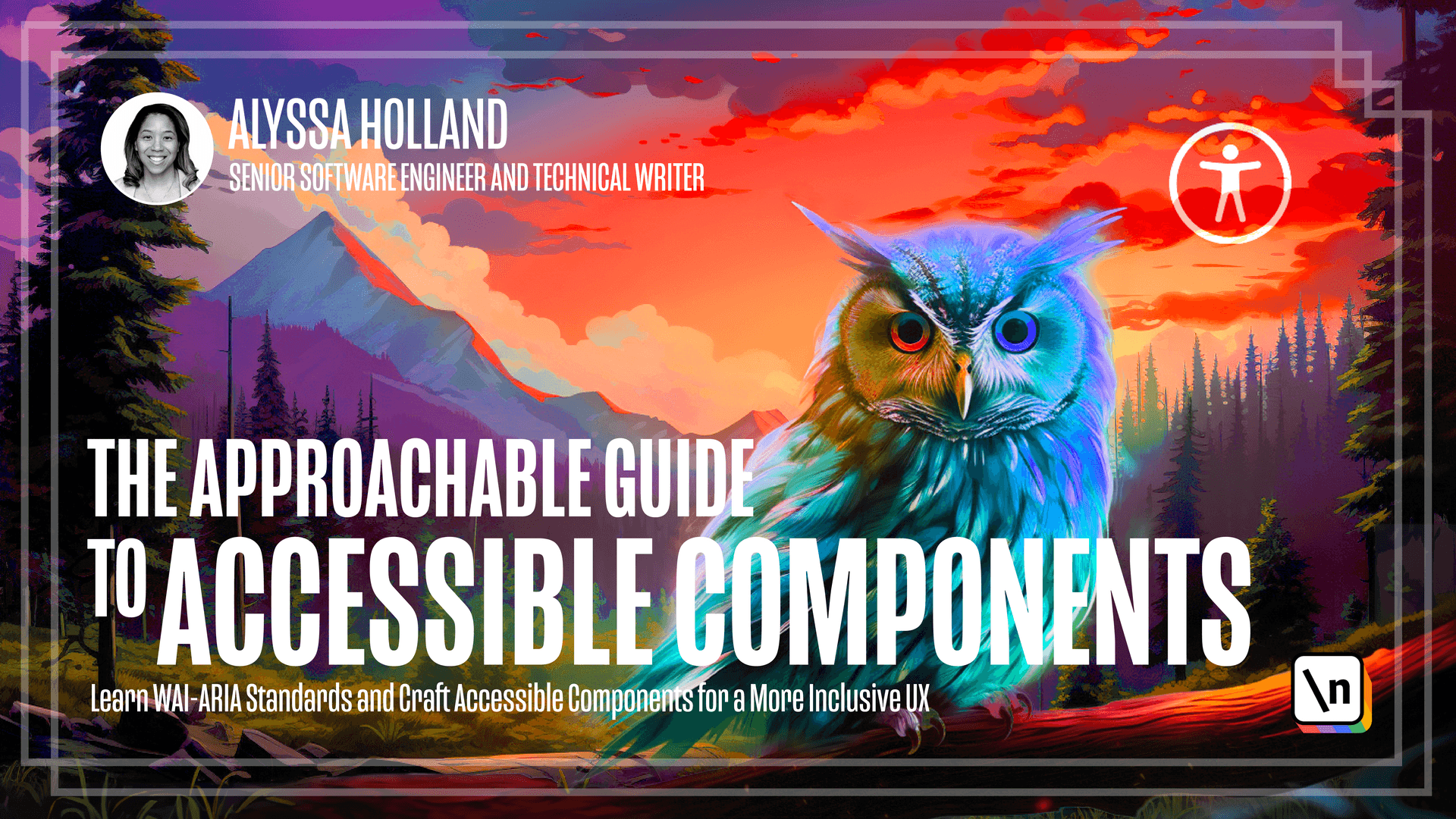Course Introduction
Introduction to "The Approachable Guide to Accessible Components"
This lesson preview is part of the The Approachable Guide to Accessible Components course and can be unlocked immediately with a \newline Pro subscription or a single-time purchase. Already have access to this course? Log in here.
Get unlimited access to The Approachable Guide to Accessible Components, plus 70+ \newline books, guides and courses with the \newline Pro subscription.

[00:10 - 00:14] Hello and welcome to the course. My name is Alyssa Holland and I'll be your instructor.
[00:15 - 00:27] As a previous maintainer of my employer's component library, I learned a lot about what it takes to make accessible components for the web and I'm excited to be sharing that knowledge with you. Accessibility is a massive topic that includes a myriad of nuances and subtopics.
[00:28 - 00:39] Tifting through the large amount of resources and determining the best practices can be a daunting task. The goal of this course is to make the topic of accessibility feel more approachable and equip you with the techniques to help you be successful.
[00:40 - 00:51] Throughout this course, we will cover a variety of material. You learn to eat those behind why accessibility is important, what the techniques are to create accessible elements, and how to apply those principles during development.
[00:52 - 01:02] We'll start off by laying down a solid foundation that you can build upon. Within this foundation section, we will cover topics including semantic HTML, ARIA, assistive technologies, and how to perform an accessibility audit.
[01:03 - 01:11] Just to name a few. The latter half of this course will take the concepts taught in the foundational section and provide hands-on experience building out sample components.
[01:12 - 01:26] As an added bonus, we'll even cover how you can leverage a headless component library to provide an alternative implementation solution. By the end of this course, you will have built a lens for accessibility and have a solid foundation in the fundamentals, along with how to identify audit and address accessibility issues.
[01:27 - 01:29] I'm extremely excited to take you on this journey. Let's dive in.